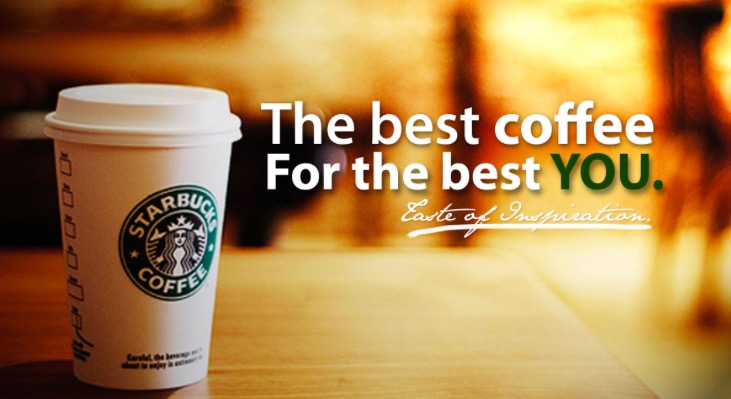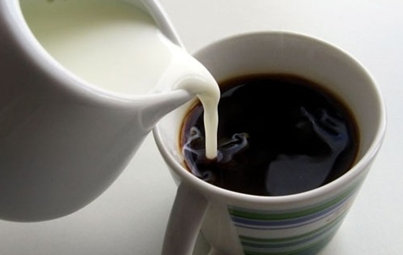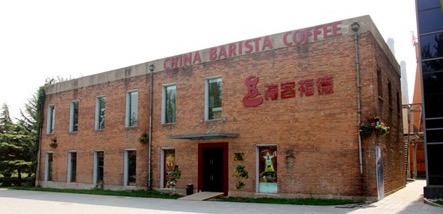Why will Starbucks open a new battlefield in third-tier cities in the next five years?
On August 2nd, Starbucks announced the official opening of its first store in the northwestern city of Yinchuan. At the Wuhan high-speed railway station 1400 kilometers away from Yinchuan, Mr. Xu, a star fan, arrived at Starbucks early in the morning and asked a barista he knew to help contact the purchasing agent of Yinchuan City Cup. "I'm not at Starbucks. I'm on my way to Starbucks." This sentence has been around since 1999 when Starbucks entered the mainland Chinese market, and it still applies today. As the "green giant" of the coffee industry, the reporter got the news yesterday that Starbucks will recruit baristas in Shiyan City, which means that Starbucks has expanded to Wuhan, Yichang, Huangshi and Xiangyang in Hubei Province, and is about to enter the Shiyan market.
Since Starbucks entered the Chinese mainland market in 1999, this green double-tailed mermaid from Seattle, USA, has almost become synonymous with fashion, high-end and petty bourgeoisie. At present, Starbucks has more than 2100 stores in China, making it Starbucks' largest overseas market, second only to the United States. In the next five years, the Chinese market will open 500 stores a year. There is no doubt that in addition to in-depth excavation in first-and second-tier cities, domestic third-and fourth-tier cities will also become a new battlefield for them to explore.
A cup of coffee smells good in the ancient city
On February 5, 2016, Starbucks' first store in Xiangyang settled in Wanda Plaza. On the opening day of Xiangyang, fans in line experienced the personality and star style of this world-famous brand: no rainbow door, no drum band. What comes into view is a long corridor of coffee culture-at high elevations, 100% Arabica coffee beans, hand-picked, fresh-boiled each cup, 40 years of baking experience. Starbucks black apron coffee master carefully explained the story of how a coffee bean turned into a cup of coffee.
In addition to the mellow aroma of coffee with international style, Xiangyang Starbucks also has a strong flavor of the ancient city. The refreshing design on the Xiangyang City Cup is Gulongzhong on one side and Wuhou Temple on the other, both of which are the most landmark ancient buildings in Xiangyang. This has won the favor of Xiangyang people, but also won the warm response of star fans everywhere.
The first store of Starbucks in Xiangyang also has an oversized 360-degree open coffee bar and brings a hand-brewed coffee experience, which is rare even in Wuhan. But like Starbucks, which is common in all first-and second-tier cities, passers-by see glittering coffee bars, busy baristas and leisurely baristas, and the whole scene is like a coffee stage show.
The picture shows Xiangyang City Cup.
Win over customers who don't drink coffee.
In 1999, Starbucks officially entered the mainland market. For the next 10 years, it has maintained the pace of opening 30-50 new stores a year. Since 2012, the pace has accelerated significantly. In 2012, it added 204 stores. In 2013, the number was 317, and new stores were opened almost every day in 2014.
The pace of Starbucks opening in Hubei seems to be more steady: the first Starbucks in Wuhan opened on February 5, 2008; entered Yichang on September 20, 2014; settled in Yellowstone on September 28, 2015; and welcomed Starbucks in Xiangyang on February 5, 2016. it is expected to open to Shiyan by the end of 2016.
Walking so slowly, it makes people feel that Starbucks is playing a big game of chess, taking every step cautiously.
Industry insiders point out that as it sinks to cover more and more third-and fourth-tier cities, some industries will gradually move slowly, but the coffee industry is one of the rare blue seas among the great potential of China's future coffee consumption. What Starbucks needs to do in these new markets, mainly in third-and fourth-tier cities, is to win over customers who do not drink coffee and become their 'first cup'.
"whether you like coffee or not, Starbucks' presence in Xiangyang has improved the 'style' of Xiangyang." This comment from netizen Zixia in also seems to support the views of professionals.
"the coffee atmosphere in Xiangyang is better than expected." Interestingly, Owen, a Starbucks barista from Wuhan, told reporters that he took the initiative to sign up for more than a month at the first store in Xiangyang to work with local new partners. And like him, there are many senior baristas who have been stationed in Xiangyang from mature markets in other places.
Yu Jingjing, a barista who returned home from Starbucks in Shenzhen, has just become the first local black apron coffee master in Xiangyang. "it feels as cordial as Starbucks in Shenzhen. Our most important job every day is to bring Starbucks brand culture to our friends in our hometown. "
Ms. Tong, who has worked in Beijing and returned to Xiangyang to start a family, orders a latte plus muffin every day. She said: "the feeling of drinking Starbucks on my doorstep is both familiar and unfamiliar. What I am familiar with is the same delicious coffee as Beijing. What is strange is the feeling of sitting around Starbucks with a hometown accent. I particularly like it."
To be the first cup of coffee for young people.
"I wouldn't be surprised if one day we have more chain stores in the Chinese market than in the United States." Howard Schultz, chairman and CEO of Starbucks, said in an interview with CNBC.
He once confidently pointed out: "China's middle class will grow from 300 million to 600 million in 10 years, and we have made a long-term layout here." But now that Starbucks consumers have expanded from middle-class white-collar workers to students, it is normal for college students and even middle school students to hold a cup of Starbucks on the streets of Chinese cities. It is no exaggeration to say that Starbucks has become the first cup of coffee for Chinese young people.
For an industry leader, in first-and second-tier cities, brands need to spend a lot of effort to maintain a sense of freshness and high-end positioning among consumers. But at the same time, in the vast third and fourth tier market, the problem that needs to be solved is not easy. From the example of Xiangyang, we can see the "distraction" of Starbucks: the introduction of the City Cup, inheriting culture and winning favor; baristas stationed from the provincial capital to Xiangyang to ensure the standard of internal strict training and the inheritance of coffee culture; the ingenious store design brings a particularly fresh Starbucks experience to the people of Xiangyang. The ultimate goal of all these efforts and innovations is to achieve the same high standard of operation as first-tier cities.

Important Notice :
前街咖啡 FrontStreet Coffee has moved to new addredd:
FrontStreet Coffee Address: 315,Donghua East Road,GuangZhou
Tel:020 38364473
- Prev

What kind of sparks will happen when coffee beans encounter the Internet?
Original title: what kind of spark will happen when coffee beans encounter the Internet? It is reported that Shandong Taishan Commodity spot Trading Co., Ltd. (hereinafter referred to as Taishan spot) will newly launch Akka coffee beans (raw beans) on the sale and trading system on August 10, 2016. the first day issue price is 9.8yuan / 10g and the commodity trading code is 977002. Shandong Taishan Commodity spot Trading Co., Ltd. is based on "
- Next

The first Western Branch of CBC International Coffee training Institute settled in Jincheng
Drinking coffee, making pastries and tasting red wine, do you yearn for this kind of life full of style? If so, you must come to a place located in Lanzhou Creative Culture Industry Park, Duanjiatan Road, Lanzhou City. As a key supporting enterprise of Lanzhou Creative Culture Industry Park, Gansu Sanyizhuangchuang Space Culture Communication Co., Ltd. joined hands with Beijing CBC.
Related
- Being chased out of the rain in front of Starbucks?! Store: Sheltering from rain under umbrellas poses a safety hazard
- The white moonlight has changed?! Lucky launches "Big Winter Pear American"
- Hand-brewed coffee three-stage method, high-sweet and universal brewing method to share! What does the high sweet water level of hand-brewed coffee mean?
- What is the difference between raw, refined and full espresso coffee? How to extract espresso and taste good?
- A complete list of coffee bean names and their meanings! What is Yejia Shefi coffee? Where is Mantelin coffee?
- What grade does Arida Manor Kaduai coffee beans belong to? What treatment is Arida ASD slow anaerobic sun exposure?
- The milk tea cup becomes smaller?! Overlord Tea Girl launches a new "Return to Yunnan" series
- Accused of selling counterfeit and high-priced coffee beans! Well-known boutique coffee brand "Oukelao" bowed and apologized!
- How to make espresso dumplings? Can I eat coffee and glutinous rice balls together?
- Save the unformed and stagnant powder cakes in one second! What is the problem with stagnant water in the powder bowl of the espresso machine?

